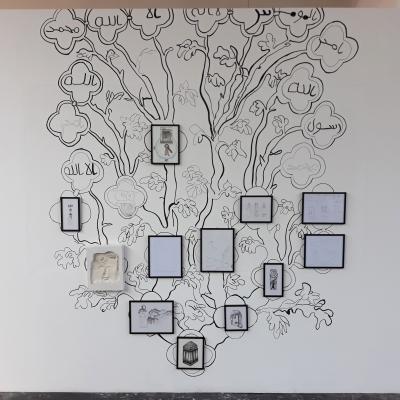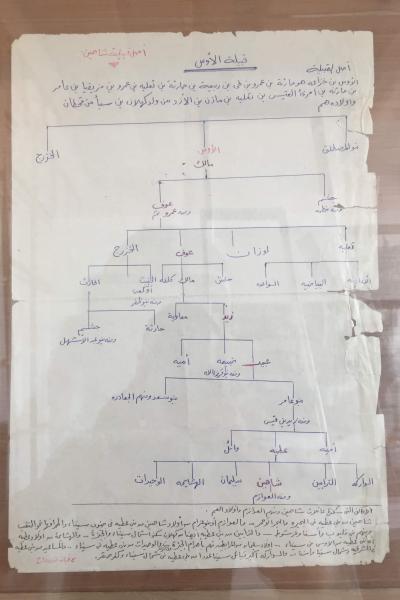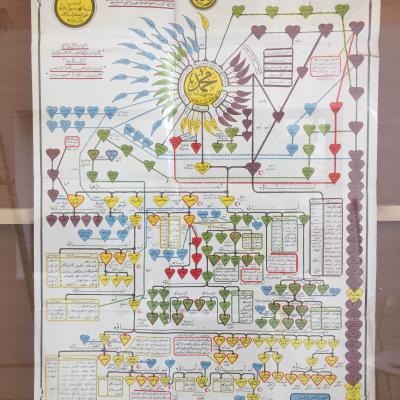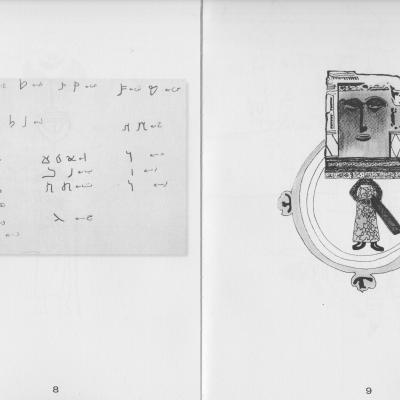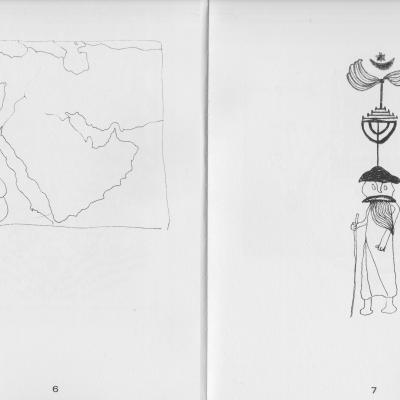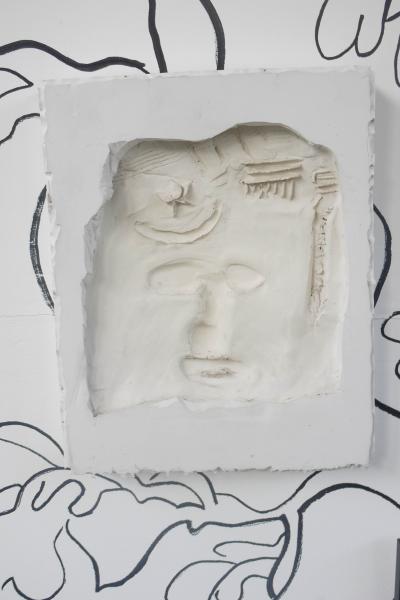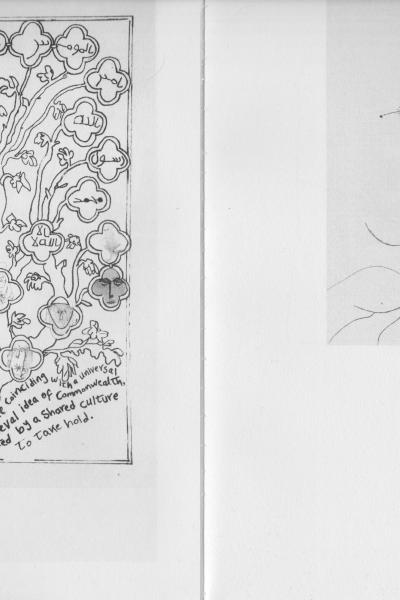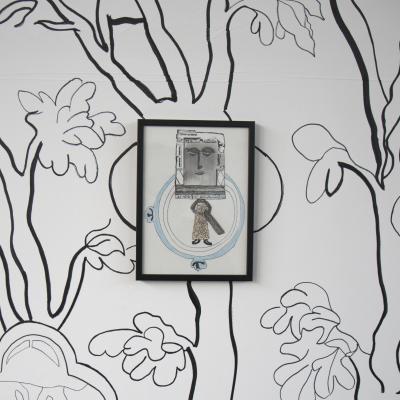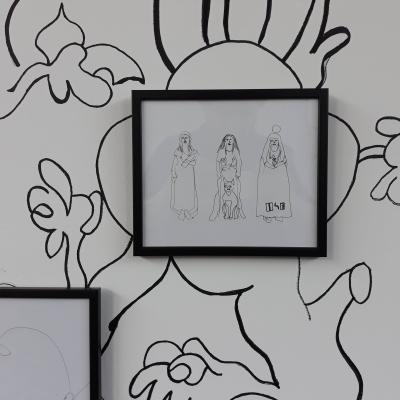The Big Family Tree, 2019
225 x 180 cm, acrylic markers on wood + 11 framed drawings: pigment liner on paper (various sizes) + white silicone rubber intaglio sculpture
Although the original family document has always been around, my attention was drawn to it only lately when a taxi driver talked passionately about the significance of the naming system, the archive and the whole economy of Family Trees. He argued that most of us, modern Egyptians, descend from Arab tribes, and the luckiest of us are the ones who would find that they descend from prophet Mohamed’s family. In this case, Saudi Arabia would put you on a payroll for the rest of your life, being one of the prophet's family.
He also argued that lineage is kept in a rigorous oral tradition, taught by one generation to the other. And that some sheikhs of the tribes (highest figure) can go back in telling their name as in this son of this son of this, all the way to Ismael (the father of all Arabs or Ibrahim (the grandfather of all Arabs) and in some extreme versions of the story, they can go back to Noah and even to Adam and Eve. Rest assured: our history is covered!
He was probably reminded of that because we were passing by Al Azhar, the highest religious institution in the Sunni Islamic world, at large. He had an application already submitted there to prove his descent to the prophet hoping that the prophet would lift him and his family out of poverty. If identity is not, after all, translated into some material gain, what does it mean then to the ordinary person?

